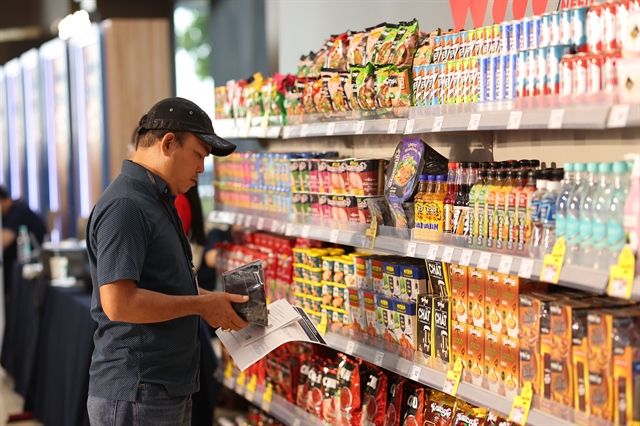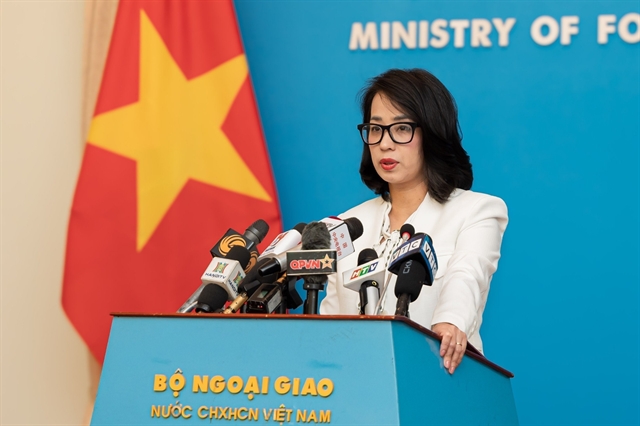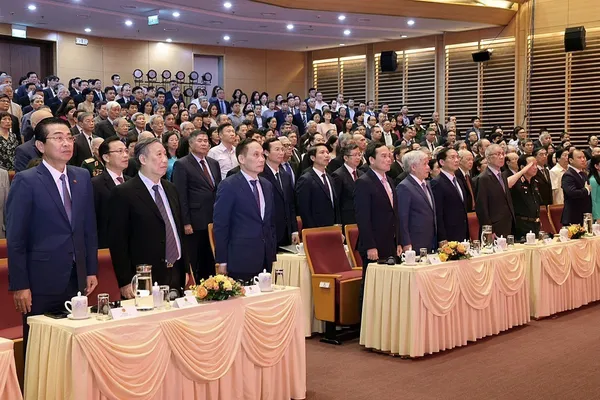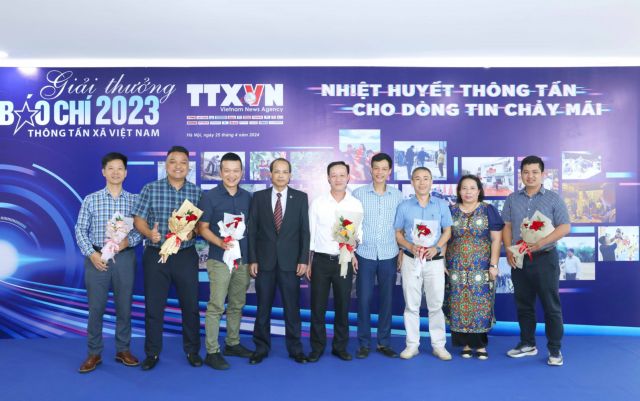 Economy
Economy

Regional economic integration will continue to be one of APEC’s core cooperation pillars, including the fostering of Regional Trade Agreements/Free Trade Agreements (RTAs/FTAs) with the goal of realising a Free Trade Agreement in the Asia-Pacific region (FTAAP), a high-ranking official has said.
 |
| Delegates talk on the sidelines of the APEC dialogue on Regional Trade Agreements/Free Trade Agreements on Sunday in HCM City. — VNA/VNS Photo Văn Điệp |
HCM CITY — Regional economic integration will continue to be one of APEC’s core cooperation pillars, including the fostering of Regional Trade Agreements/Free Trade Agreements (RTAs/FTAs) with the goal of realising a Free Trade Agreement in the Asia-Pacific region (FTAAP), a high-ranking official has said.
Speaking at an APEC dialogue on RTAs/FTAs, Bùi Thanh Sơn, permanent deputy minister of the Ministry of Foreign Affairs, said the meeting played a key role in sharing experiences and views in negotiating and implementing RTAs/FTAs in the Asia-Pacific region.
Representatives from 21 APEC-member economies took part in the dialogue held on Sunday (August 27) in HCM City.
For the past 30 years, RTAs/FTAs in the APEC region have flourished in number, scope of work and sophistication, Sơn said, adding that over half of the world’s FTAs originate from this region.
As of December last year, 165 RTAs/FTAs signed by at least one APEC member went into effect, 62 of them intra-APEC agreements, according to the APEC Policy Support Unit.
Increasingly sophisticated, next-generation regional FTAs, which address next-generation trade and investment issues and behind-the-border and non-tariff measures, are being developed, with major implications, according to Sơn.
Amid positive signs of the regional and global economic recovery, making the most of benefits from RTAs/FTAs is important to economic growth and trade and investment in the region, he said.
Thanks to the RTAs and FTAs, intra-APEC trade from 2000 to 2016 increased by 174 per cent, from US$2.3 trillion to $6.3 trillion.
“We are in the process of realising the Bogor Goals of trade and investment liberalisation and facilitation by 2020 as well as shaping an APEC vision for the realisation of an FTAAP as directed by APEC Economic Leaders in 2010 in Japan,” he said.
At the 24th APEC Economic Leaders Meeting in Lima, Peru last year, the APEC Economic Leaders endorsed the Collective Strategy Study on FTAAP and delivered the Lima Declaration on FTAAP, which instructed Ministers and SOMs to further research the contributions made by FTAs towards the realisation of FTAAP.
The leaders emphasised APEC’s continued role as an incubator as well as the consolidation of initiatives that would lead to a future FTAAP, with a focus on capacity-building for developing member economies.
“No one can refute the enormous static and dynamic benefits of FTAs on economic growth, market access, FDI attraction, and domestic institutional reforms,” Sơn said.
“However, in the current regional and global economic context and under the impact of the fourth industrial revolution, the question is how to make the most of the socio-economic benefits that FTAs bring, concurrently with mitigating adverse impacts arising from adjustment costs and increasing income disparity,” he said.
In addition, given the economic, political and development diversities in APEC, sharing of information and engaging in negotiations and conclusions of RTAs/FTAs is necessary for mutual economic development, social stability and shared prosperity for the entire Asia-Pacific region, according to Sơn.
Benefits
Speaking on the sidelines of the meeting, Marie Sherylyn D Aquia, chair of the APEC Committee on Trade and Investment, said: “When you have FTAs and RTAs, you lock in a lot of rules, agreeing to many rules regarding facilitating trade, like customs procedures and rules of origin, as well as how you treat technical barriers to trade and how you liberalise certain goods and services.”
“These rules are important and useful for businesses to make plans. And it’s also good, because RTAs/FTAs talk about market access, keeping your economy open. So having an open economy is very useful for consumers and businesses, and for allowing goods to enter countries freely,” Aquia told Việt Nam News.
“In the way that you negotiate market access commitments with your trading partners, you are making sure that you are able to export to certain countries. So that’s good, especially if you have bilateral trade,” she added.
To gain the most benefits from such FTAs, economies should make maximum use of the preferences that they have under their FTAs, she said.
“There are three main points: promote better utilisation of FTAs and RTAs, make maximum use of market access preferences, and use the rules available to guide businesses and governments,” she added.
“We are now working to have high quality, comprehensive RTAs/FTAs. We will negotiate high-quality, comprehensive RTAs/FTAs that are consistent with WTO. Secondly, we do a lot of information-sharing and exchanging of best practices among economies,” she said.
Speaking on the sidelines of the event, ambassador Robert Holleyman, president and CEO of C&M International, said Việt Nam’s leadership in hosting APEC this year was a sign that Việt Nam is a key player in wanting to be integrated in the Asia-Pacific economy.
Efforts like the Trans-Pacific Partnership (TPP), in which Việt Nam continues to be a participant with 10 other countries still in the TPP, are important, according to Holleyman.
The efforts by Việt Nam to bring the parties together as host this year and discuss the future of trade has also been important, he said.
“There has been a rapid increase in interest in regional trade agreements. Again, Việt Nam remains one of the central pillars of the TPP. I know there is discussion about moving ahead with the TPP. That would certainly be good for Việt Nam’s economy,” Holleyman said.
“It was determined earlier that the process of the original 12 economies in the TPP, now 11 economies (excluding the US, which has withdrawn from the TPP under US President Donald Trump), Việt Nam had the most to gain in terms of economic growth, job growth and integration,” he added.
“The opportunities are enormous for Việt Nam to grow. Việt Nam is really taking a leading position in the global economy because of the inherent trade activity in the country,” he told Việt Nam News.
“Challenges for Việt Nam include ensuring that it has an open economy for investment that allows it to fully participate in these agreements,” he said. — VNS









